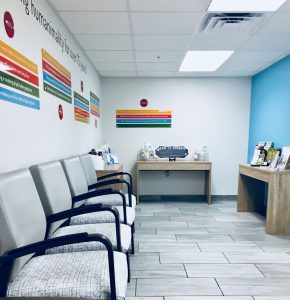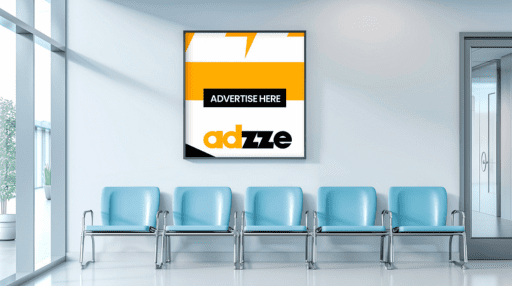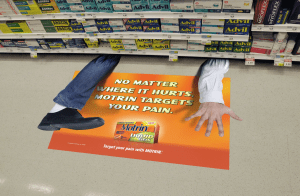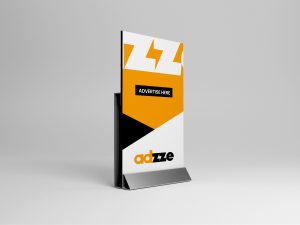Doctor office advertising is a powerful marketing approach, allowing pharmaceutical brands to directly reach patients at a critical point of healthcare decision-making. The strategic placement of ads in doctor offices has become increasingly popular, with marketing professionals recognizing its potential to inform, educate, and influence patient choices. However, alongside this potential come crucial ethical considerations that must be carefully managed.
As brands leverage doctor office ads to educate patients about medications, treatments, and health products, they bear a responsibility to ensure that their advertising practices remain ethical, transparent, and patient-centered. This blog explores key ethical considerations marketers must address when creating and deploying pharmaceutical advertising in doctor office settings.
Understanding the Ethics of Doctor Office Advertising
Doctor office advertising provides a unique environment where patients are often highly receptive due to the context of medical care. Pharmaceutical brands utilizing ads in doctor offices gain significant credibility simply by association with healthcare providers. However, this same advantage also raises ethical concerns related to transparency, accuracy, and patient autonomy.
Ethical pharmaceutical advertising within doctor offices demands marketers prioritize informative content over persuasive sales techniques. Advertisements must avoid overstating benefits, underrepresenting risks, or otherwise misleading patients who place their trust in medical environments.
Doctor Office Advertising and Informed Consent
A cornerstone of ethical advertising in doctor office environments is respecting patient autonomy through informed consent. Ads placed in doctor offices should empower patients to make educated healthcare decisions. Marketers must carefully ensure their advertising provides balanced, clear information—especially regarding side effects, contraindications, and alternative treatment options.
For instance, a doctor office ad promoting a new medication should prominently and clearly present critical information such as potential side effects, dosage recommendations, and consultation requirements. Omitting such information might compromise the patient’s right to informed decision-making.
Avoiding Misrepresentation and Exaggeration
Doctor office advertising can inadvertently create perceptions of endorsement by healthcare providers. Pharmaceutical companies must be cautious not to exploit this implied credibility through exaggerated claims. Advertisements in doctor offices should strictly adhere to scientifically validated information, avoiding subjective language that might mislead patients.
For example, an ad in a doctor office that describes a medication as “miracle cure” or “breakthrough treatment” without substantial scientific backing would be ethically questionable. Ethical advertising standards require clear, objective communication that supports—not exaggerates—the product’s clinical value.

Advertising in Doctors Waiting Rooms
Are you curious to see if this works for you? See our Doctors Office Advertising solutions!
Ethical Guidelines for Advertising in Doctor Office Settings
Given the sensitive nature of healthcare communications, pharmaceutical companies and marketing professionals must follow clear ethical guidelines when placing ads in doctor offices. Here are critical guidelines to ensure ethical compliance:
Transparency and Full Disclosure
Transparency should be paramount. Ads in doctor offices should explicitly state their sponsorship, clearly distinguishing them from educational materials provided by the healthcare facility itself. For instance, pharmaceutical ads should prominently indicate they are paid advertisements, preventing any confusion about their origin.
Patient Education Over Promotion
Advertising in doctor offices should prioritize patient education rather than aggressive promotion. Ads must clearly and objectively present treatment options, allowing patients to assess risks and benefits independently. This approach supports patient autonomy and aligns with ethical standards in healthcare marketing.
Avoiding Fear-Based Appeals
Fear-based advertising can be particularly problematic in medical environments. Doctor office ads that exploit patient fears to encourage specific treatment choices are unethical. Marketers should carefully craft messaging to avoid negative emotional manipulation, instead emphasizing factual, supportive content.
For example, an ethical doctor office ad would not exaggerate disease risks to scare patients into choosing a specific medication. Instead, it would educate patients clearly and neutrally about treatment options and their respective merits.
The Impact of Ethical Doctor Office Advertising on Brand Trust
Ethical doctor office advertising doesn’t only fulfill moral responsibilities; it significantly enhances brand trust. Patients, more aware and discerning than ever, appreciate transparency and ethical integrity in healthcare communications. Brands consistently practicing ethical advertising in doctor office settings position themselves positively with both patients and healthcare providers, fostering long-term loyalty.
Conversely, unethical practices—such as misleading claims or insufficient disclosure—risk severe reputational damage. In extreme cases, unethical doctor office ads may even trigger regulatory penalties, legal liabilities, and loss of patient trust.
Best Practices for Ethical Ads in Doctor Offices
To help marketers navigate ethical responsibilities in doctor office advertising, consider these best practices:
Clearly Label Sponsored Content: Ensure all doctor office ads disclose sponsorship prominently.
Maintain Accuracy and Balance: Present both the benefits and risks of treatments objectively.
Provide Resources for Further Information: Include contact details or website links so patients can independently verify ad claims.
Coordinate with Healthcare Providers: Collaborate closely with medical professionals to confirm accuracy and appropriateness of advertising materials.
Challenges in Doctor Office Ads and How to Overcome Them
Despite efforts to adhere to ethical practices, marketers face specific challenges, including maintaining clarity and ensuring accurate comprehension. Patients have varied health literacy levels, making it critical for ads in doctor offices to simplify complex medical information without compromising accuracy.
Solutions include utilizing plain language, visual aids, and well-structured layouts to communicate effectively with diverse patient populations. Partnering with healthcare providers and patient advocates can also help create materials that genuinely resonate with patient needs.
The Future of Ethical Doctor Office Advertising
As the medical marketing landscape continues evolving, ethical considerations in doctor office advertising will become even more critical. Technological advancements, patient-centric healthcare trends, and increased regulatory oversight all point toward greater scrutiny of pharmaceutical advertising practices.
Marketers who proactively embrace ethical standards will not only mitigate risks but also build meaningful patient connections through trusted, transparent communications. Embracing ethics in doctor office advertising represents a long-term competitive advantage that boosts credibility and fosters lasting patient loyalty.






